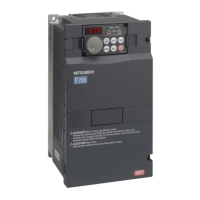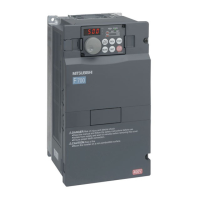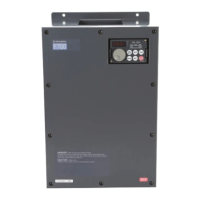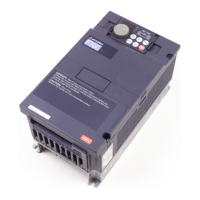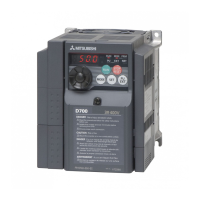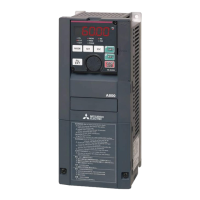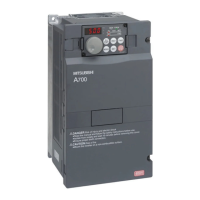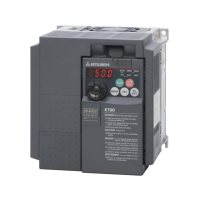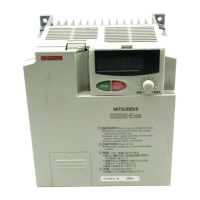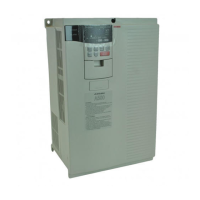114
Function assignment of external
terminal and control
4.10.8 Remote output function (REM signal, Pr. 495 to Pr. 497)
You can utilize the on/off of the inverter's output signals instead of the remote output terminal of the
programmable logic controller.
Parameter
Number
Name Initial Value Setting Range Description
495 Remote output selection 0
0
Remote output data clear at powering
off
1
Remote output data held at powering
off
496 * Remote output data 1 0 0 to 4095
Refer to the following diagram.
497 * Remote output data 2 0 0 to 4095
The above parameters can be set when Pr. 160 User group read selection = "0". (Refer to page 156)
* The above parameters allow its setting to be changed during operation in any operation mode even if "0" (initial value) is set in
Pr. 77 Parameter write selection.
<Remote output data>
Pr. 496
Pr. 497
*1 As desired
*2 Y0 to Y6 are available only when the extension output option (FR-
A7AY) is fitted
*3 RA1 to RA3 are available only when the relay output option (FR-A7AR)
is fitted
⋅ The output terminal can be turned on/off depending
on the Pr. 496 or Pr. 497 setting. The remote output
selection can be controlled on/off by computer link
communication from the PU connector or RS-485
port or by communication from the communication
option.
⋅ Set "96" (positive logic) or "196" (negative logic) to
any of Pr. 190 to Pr. 196 (output terminal function
selection), and assign the remote output (REM)
signal to the terminal used for remote output,
⋅ When you refer to the left diagram and set 1 to the
terminal bit (terminal where the REM signal has
been assigned) of Pr. 496 or Pr. 497, the output
terminal turns on (off for negative logic). By setting
0, the output terminal turns off (on for negative
logic).
Example)When "96" (positive logic) is set to Pr. 190 RUN terminal function selection and "1" (H01) is set to Pr. 496,
the terminal RUN turns on.
ON/OFF example for positive logic
⋅ When Pr. 495 = "0" (initial value), performing a power
supply reset (including a power failure) clears the REM
signal output. (The ON/OFF states of the terminals are
as set in Pr. 190 to Pr. 196.) The Pr. 496 and Pr. 497
settings are also "0".
When Pr. 495 = "1", the remote output data before power
supply-off is stored into the EEPROM, so the signal
output at power recovery is the same as before power
supply-off. However, it is not stored when the inverter is
reset (terminal reset, reset request through
communication).
(See the chart on the left)
REMARKS
⋅ The output terminal where the REM signal is not assigned using any of Pr. 190 to Pr. 196 does not turn on/off if 0/1 is set to the
terminal bit of Pr. 496 or Pr. 497 . (It turns on/off with the assigned function.)
⋅ When the inverter is reset (terminal reset, reset request through communication), Pr. 496 and Pr. 497 values turn to "0". When Pr.
495 = "1", however, they are the settings at power supply-off. (The settings are stored at power supply-off.)
CAUTION
⋅ When Pr. 495 = "1"(remote output data retention even at powering off), take such a step as to connect R1/L11, S1/L21 and P/+,
N/- to ensure that control power will be retained to some degree. If you do not take such a step, the output signals provided after
power-on are not guaranteed.
♦ Parameters referred to ♦
⋅ Pr. 190 to Pr. 196 (output terminal function selection) Refer to page 107
b11 b0
ABC1
ABC2
*1
*1
*1
*1
*1
FU
OL
IPF
SU
RUN
b11 b0
Y5 *2
Y6 *2
RA1 *3
RA2 *3
RA3 *3
*1
*1
Y4 *2
Y3 *2
Y2 *2
Y1 *2
Y0 *2
Power
supply
Power
supply
OFF OFF
ONOFF
REMREM
REM signal clear REM signal held
Inverter
reset time
(about 1s)
Pr.495 = 0
Pr.495 = 1
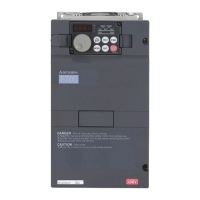
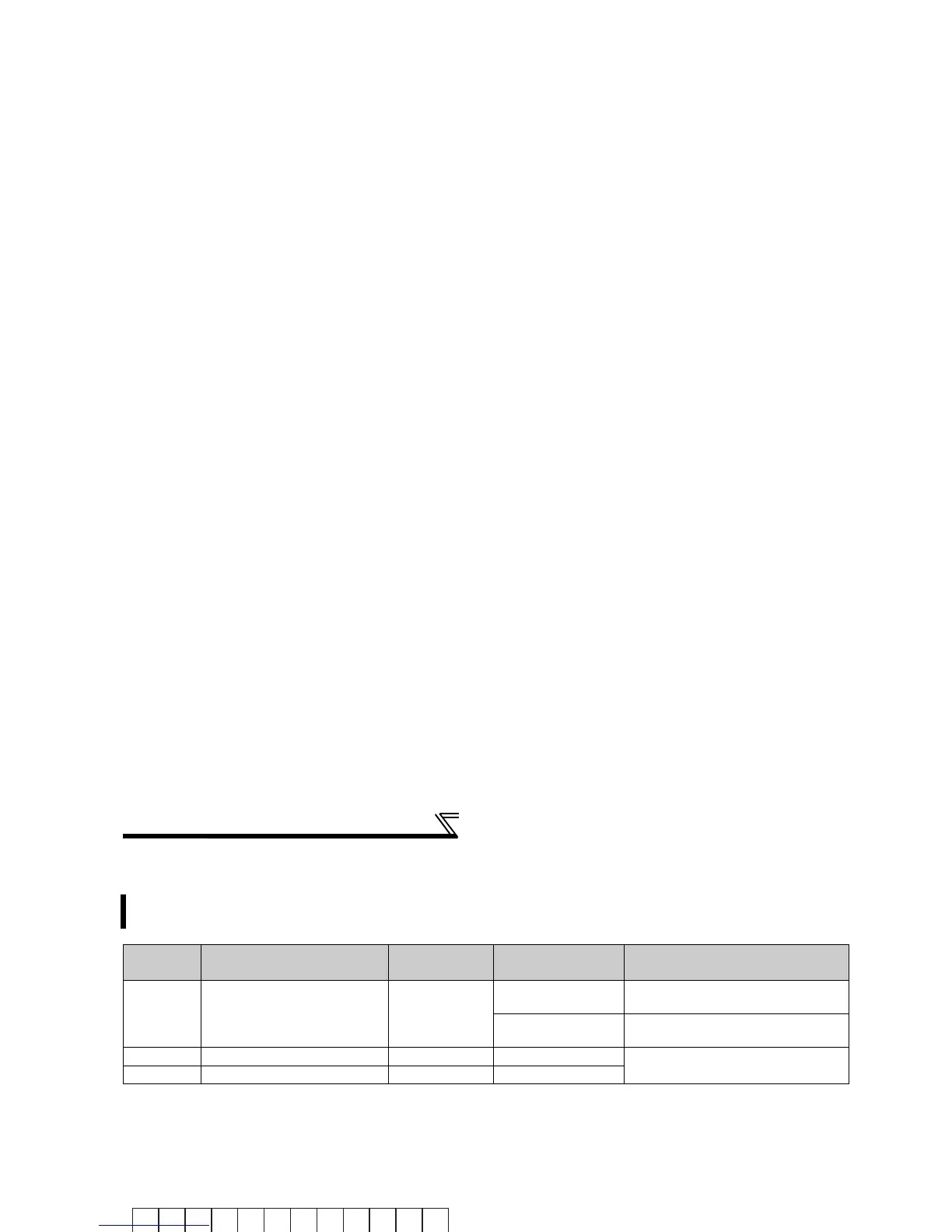